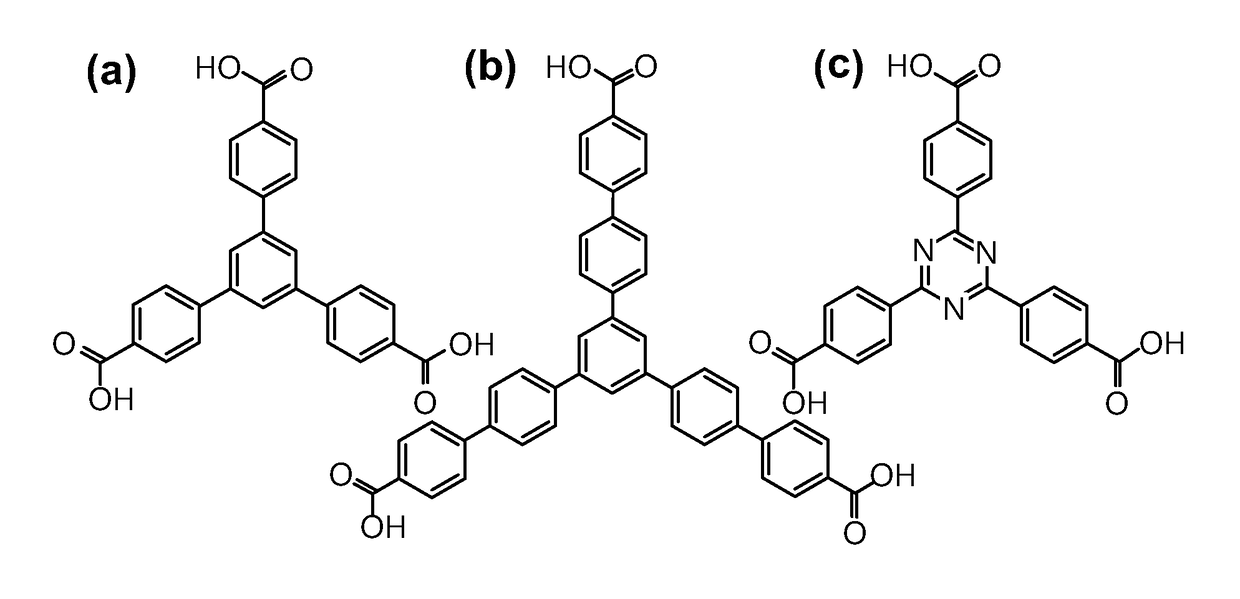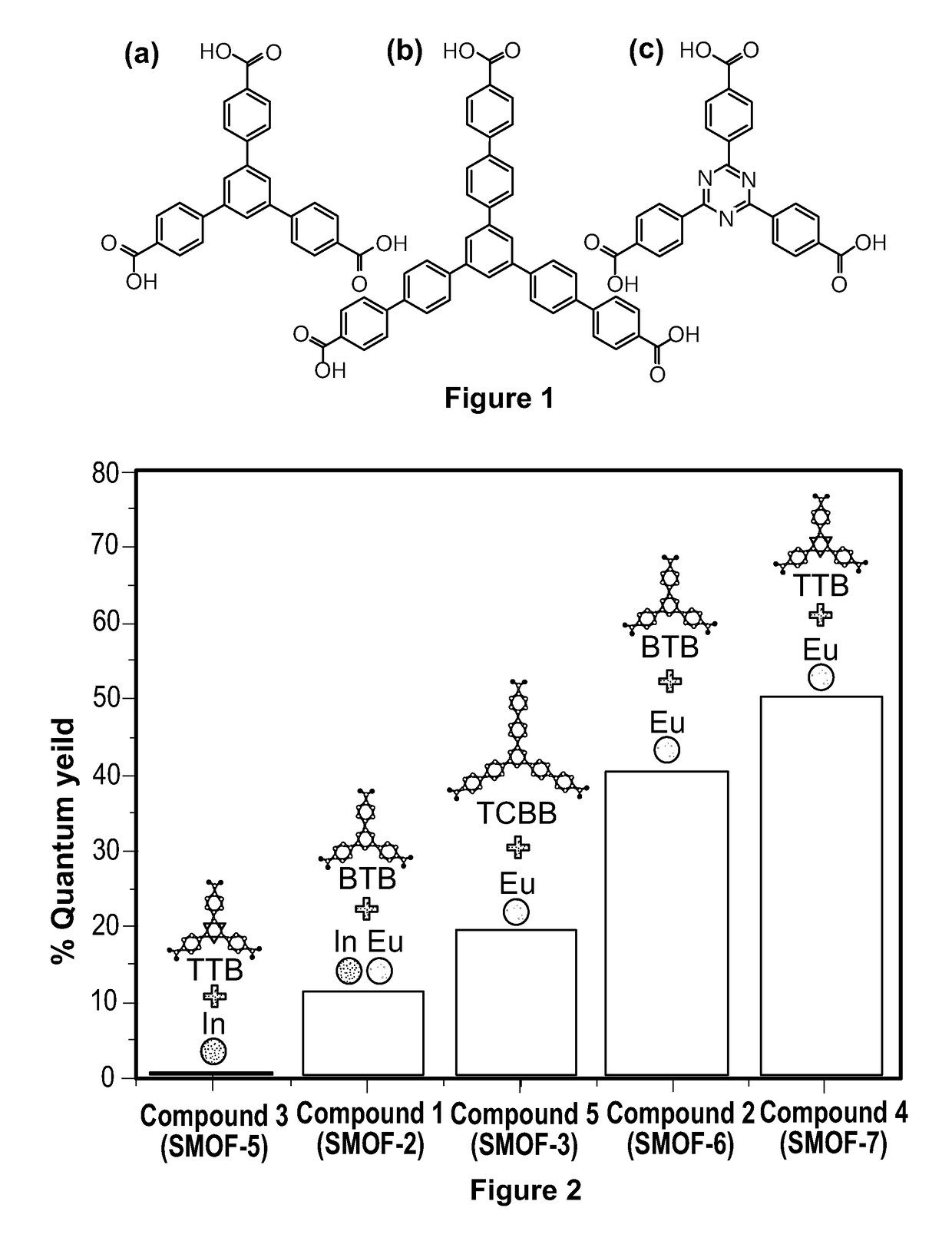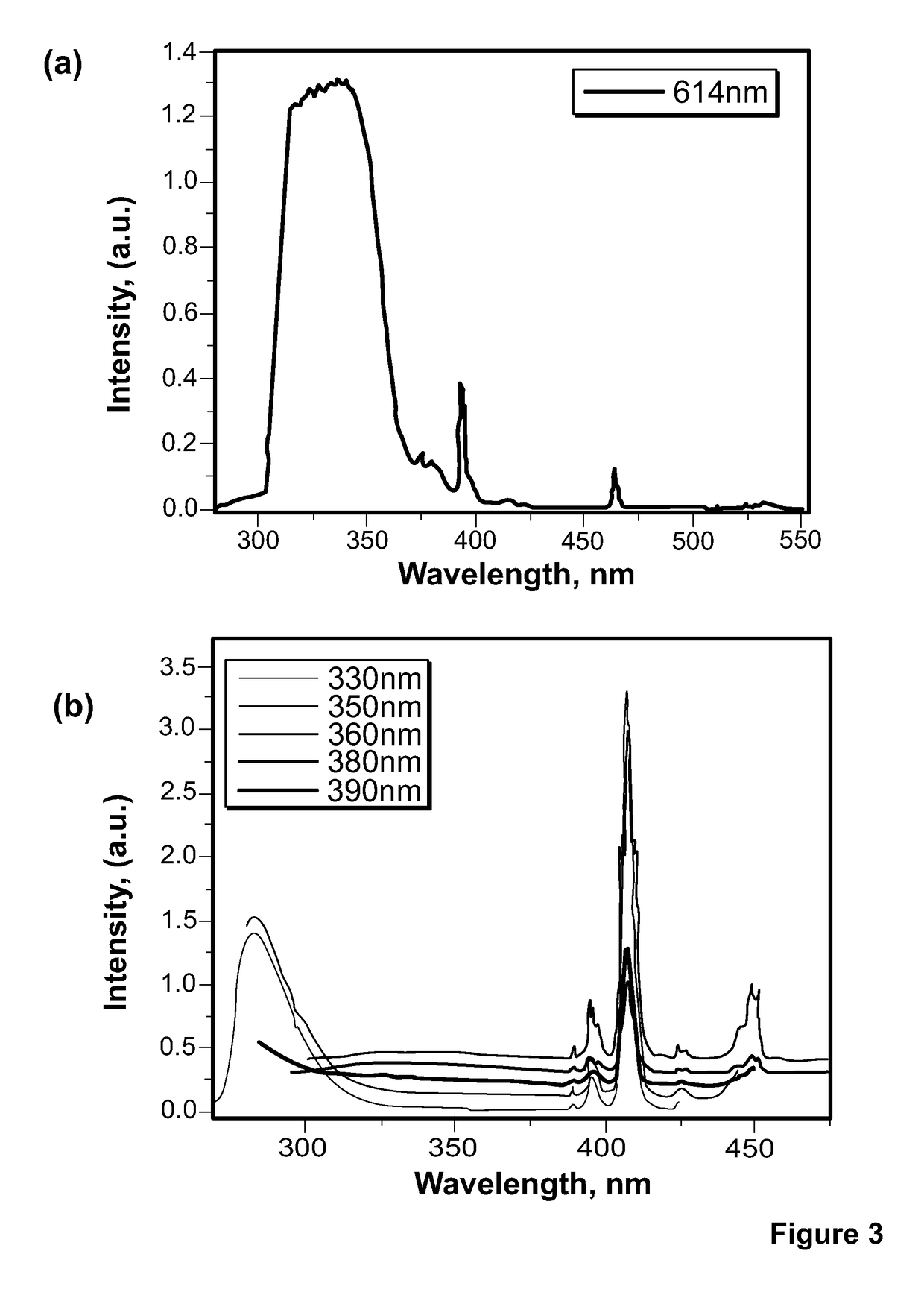Tunable photoluminescent metal-organic-frameworks and method of making the same
a metal-organic framework and photoluminescent technology, applied in the field of photoluminescence, can solve the problems of low blue absorbance, poor color rendering index (cri) of blue light, and limited use of ssl devices, and achieve the effect of high quantum yield
- Summary
- Abstract
- Description
- Claims
- Application Information
AI Technical Summary
Benefits of technology
Problems solved by technology
Method used
Image
Examples
Embodiment Construction
[0031]The present invention now will be described more fully hereinafter with reference to the accompanying drawings, in which preferred embodiments of the invention are shown. This invention may, however, be embodied in many different forms and should not be construed as limited to the embodiments set forth herein; rather, these embodiments are provided so that this disclosure will be thorough and complete and will fully convey the scope of the invention to those skilled in the art.
[0032]The present invention is directed to new photoluminescent metal-organic frameworks (MOFs). The newly developed MOFs include either non rare earth element (REE) transition metal atoms or limited concentrations of REE atoms, including: Ti, V, Cr, Mn, Fe, Co, Ni, Cu, Zn, Ga, Ge, Y, Ru, Ag, Cd, Sn, Sb, Ir, Pb, Bi, that are located in the MOF framework in site isolated locations, and have emission colors ranging from white to red, depending on the metal concentration levels and / or choice of ligand.
[0033...
PUM
| Property | Measurement | Unit |
|---|---|---|
| temperatures | aaaaa | aaaaa |
| temperatures | aaaaa | aaaaa |
| emission wavelength | aaaaa | aaaaa |
Abstract
Description
Claims
Application Information
 Login to View More
Login to View More - R&D
- Intellectual Property
- Life Sciences
- Materials
- Tech Scout
- Unparalleled Data Quality
- Higher Quality Content
- 60% Fewer Hallucinations
Browse by: Latest US Patents, China's latest patents, Technical Efficacy Thesaurus, Application Domain, Technology Topic, Popular Technical Reports.
© 2025 PatSnap. All rights reserved.Legal|Privacy policy|Modern Slavery Act Transparency Statement|Sitemap|About US| Contact US: help@patsnap.com



